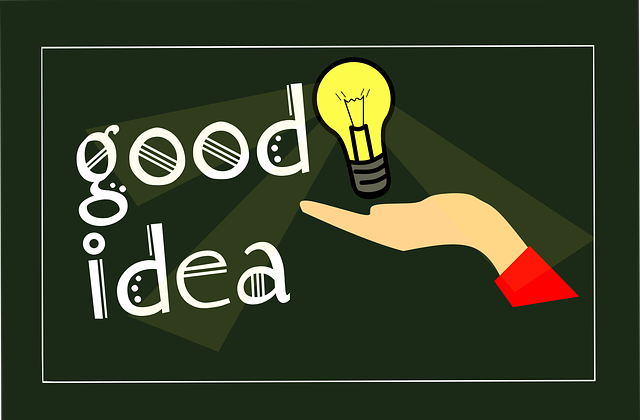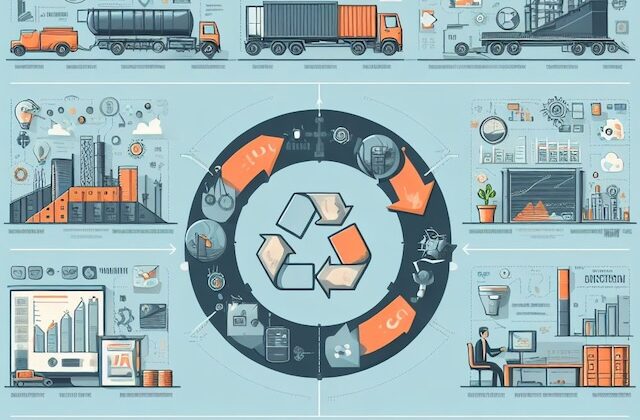
Product Ideation
“The best product managers are empathetic problem solvers who put the customer first.”
– Melissa Perri
Welcome to Day 06 of the PM series – Product Management in 30 days!
In product management, where innovation reigns supreme, ideation and brainstorming are the cornerstones of success. These processes fuel creativity and pave the way for groundbreaking solutions. This extensive post will delve deep into the world of ideation and brainstorming, exploring strategies, techniques, and their critical role in shaping remarkable products.
Learning Objectives
- Recognize the Role of Product Ideation and Brainstorming in Product Management: Understand that ideation and brainstorming are fundamental processes in product management, serving as catalysts for innovation and essential steps in the product development journey.
- Differentiate Between Ideation and Brainstorming: Distinguish between ideation and brainstorming, recognizing ideation as the process of generating a variety of ideas and brainstorming as a group activity aimed at exploring, developing, and refining those ideas.
- Understand the Product Ideation Process: Grasp the structured approach to product ideation, including preparation steps such as defining the problem, gathering resources, and assembling a diverse team, as well as the ideation session itself and subsequent idea evaluation.
- Learn Creative Techniques for Ideation: Get to know various creative techniques for ideation, such as mind mapping, brainstorming games, etc.
- Comprehend the Brainstorming Process: Understand the steps involved in the brainstorming process, from setting clear goals and assigning roles in preparation to the actual brainstorming session, incorporating warm-up activities, encouraging participation, and the subsequent idea refinement phase.
- Understand the Importance of Criteria and Voting in Idea Evaluation: Recognize the significance of establishing criteria for evaluating ideas during the idea evaluation phase and employing techniques like dot voting or ranking to prioritize and select promising ideas.
Introduction
Innovation is the lifeblood of any successful product, and it all starts with a spark of an idea. However, generating and nurturing that idea into a viable product requires a structured approach. This is where ideation and brainstorming come into play.
Understanding Product Ideation 💭
Ideation is the process of generating a wide variety of ideas. It’s about opening the floodgates of creativity and encouraging out-of-the-box thinking. Ideation can be done individually or collaboratively, but it should always be free from judgment and criticism in its initial stages.
Ideation has three stages
- Generation
- Selection
- Implementation

Generation is all about collecting as much as ideas as possible. There is no limitation and ideas can be random. More the number of ideas, the better end result could be. The ideas can come from anybody and anywhere. So keep all the options open
“Ideas are no one’s monopoly!”
Dhirubhai Ambani
Selection is about choosing the best idea from a list of good ideas. This is difficult part but the focus should be on relevancy. This filtering process will lead to a great idea. There are multiple tools for idea selection like Brainstorming, Mind Mapping, SCAMPER, Storyboarding etc.
Implementation is that makes the idea really great. However, this requires Product Managers to work on translating the ideas into concrete and measurable goals. Another tip is to ensure that ideas are simple to implement or at least can be simplified to ensure that it gets implemented.
We need to discuss one important part! Why do you need Product Ideation? Think over it before reading further
Why do you need Product Ideation?
The product ideation process is essential for fostering creativity, solving problems, staying relevant in the market, mitigating risks, and ultimately creating successful and user-centric products.
- Creativity and Innovation: The ideation process encourages creative thinking and innovation. It provides a structured framework for generating, developing, and refining new ideas, ensuring that the product remains innovative and relevant in the market.
- Problem Solving: Ideation helps identify and address customer problems or needs. By focusing on understanding user pain points, the product ideation process aims to create solutions that genuinely add value and improve the user experience.
- Market Relevance: In a rapidly evolving market, staying relevant is vital. Product ideation allows teams to explore emerging trends, technologies, and consumer preferences, ensuring that the final product aligns with current market demands.
- Risk Mitigation: Through a structured ideation process, potential risks and challenges can be identified early in the development cycle. This allows teams to proactively address issues and make informed decisions, reducing the likelihood of costly mistakes during later stages of product development.
- User-Centric Design: Understanding user needs and preferences is at the core of successful product development. The ideation process involves empathizing with users, gathering insights, and incorporating user feedback, resulting in products that are more likely to be well-received in the market.
- Continuous Improvement: Product ideation is an iterative process. It allows for continuous improvement and adaptation based on feedback, market changes, and evolving business strategies. This adaptability is key to maintaining competitiveness over time.
Let’s go a bit deeper into ideation process
The Product Ideation Process 💡
1️⃣ Preparation
- Define the Problem: Start by clearly defining the problem or challenge you aim to solve. This will serve as the focus for your ideation session.
- Gather Resources: Collect any relevant data, market research, or insights that can inform the ideation process.
- Assemble a Diverse Team: Bring together individuals with different backgrounds, experiences, and perspectives. Diversity sparks creativity.
2️⃣ Product Ideation Session
- Generate Ideas: Encourage participants to generate as many ideas as possible without criticism. Quantity is critical at this stage.
- Use Creative Techniques: Mind mapping, brainstorming games, or the “5 Whys” to stimulate thinking.
- Silent Ideation: Allow for silent ideation, where participants write down ideas independently before sharing them with the group.
3️⃣ Idea Evaluation
- Criteria: Establish criteria for evaluating ideas, such as feasibility, impact, and alignment with business goals.
- Voting: Use techniques like dot voting or ranking to prioritize and select the most promising ideas.
Five Tips to improve Product Ideation Process
1. User-Centric Approach: User should be at center of whole Product Ideation process. We are eventually making product to solve real customer issues and pain points.
2. Use Data and Analytics: Product Ideation must utilize data from market research, user feedback, and data analytics to drive ideation. Understanding and collection of market trends should be one of inputs of this process
3. Encourage OOTB Thinking: Out of the box thinking must be encouraged during the process. You never know that you might end up getting the most innovative
4. Innovation Culture: Having an open environment where someone can share his idea without being judged also fosters great product ideas and can contribute to product ideation process.
5. Focus on Sustainability: Product ideation must include Sustainability at its core. It is important that we create environmentally friendly products to help ourselves and our future generation to live in a better world.
Techniques for Product Ideation
There are several popular product ideation techniques, each with its own strengths and applications. The popularity of these techniques often depends on the context, team dynamics, and the specific goals of the ideation session. The list is below. We will discuss one of them. However I would encourage you to explore all of them on your own from the deep sea of knowledge called Internet
- Brainstorming: One of the most well-known techniques, brainstorming involves generating a large number of ideas in a group setting. Participants are encouraged to express any idea that comes to mind without judgment. This fosters creativity and helps build upon each other’s ideas. We will discuss this one in detail below
- Mind Mapping: Mind mapping is a visual technique that involves creating a diagram to represent ideas and their relationships. It helps to organize thoughts, identify connections, and explore different aspects of a concept.
- SCAMPER: SCAMPER is an acronym that stands for Substitute, Combine, Adapt, Modify, Put to another use, Eliminate, and Reverse. This technique encourages participants to explore various modifications and adaptations to existing ideas.
- Reverse Thinking: In reverse thinking, participants consider the opposite of a given problem or idea. By exploring what not to do, new perspectives and innovative solutions may emerge.
- Storyboarding: Particularly useful in product development, storyboarding involves creating a sequence of images or sketches to visualize a user’s experience with a product or service. This technique helps identify potential pain points and improvement areas.
The Brainstorming Process
1️⃣ Preparation
- Set Clear Goals: Define the objectives of the brainstorming session, such as developing a new product feature or solving a specific problem.
- Assign Roles: Designate a facilitator to lead the session and a scribe to capture ideas and discussions.
2️⃣ Brainstorming Session
- Warm-Up Activity: Start with a warm-up activity to get participants’ creative juices flowing.
- Encourage Participation: Create a safe and inclusive environment where everyone feels comfortable sharing ideas.
- Divergent and Convergent Thinking: Alternate between divergent thinking (generating ideas) and convergent thinking (evaluating and refining ideas).
- Build Upon Ideas: Encourage participants to build upon each other’s ideas, fostering collaboration.
3️⃣ Idea Refinement
- Filter and Prioritize: Review the generated ideas and filter out duplicates or impractical ones. Prioritize the remaining ideas.
- Detailed Planning: Develop detailed plans for implementing the chosen ideas, including timelines, responsibilities, and resources required.
🔔 Conclusion
Product Ideation and brainstorming are not just creative exercises; they are critical steps in the product development journey. They help organizations tap into the collective intelligence of their teams, fostering innovation and enabling the creation of products that truly resonate with customers.
In the dynamic world of product management, Product ideation and brainstorming are the engines of innovation. They transform vague concepts into concrete ideas and solutions, driving the development of products that address real-world problems. Embrace these processes, encourage creativity, and watch your product management endeavours flourish.
Quiz Time
1. What is the primary purpose of ideation in product management?
- a. To critique existing ideas
- b. To generate a wide variety of ideas
- c. To narrow down ideas quickly
- d. To finalize product concepts
2. How does silent ideation differ from traditional ideation?
- a. It involves brainstorming in complete silence
- b. Participants write down ideas independently before sharing them
- c. It excludes the use of creative techniques
- d. It focuses on quantity rather than quality of ideas
3. What is a key characteristic of effective product goals according to the text?
- a. Ambiguity
- b. Flexibility
- c. SMART attributes
- d. Simplicity
4. What is the purpose of divergent thinking in the brainstorming process?
- a. To filter and prioritize ideas
- b. To generate a wide variety of ideas
- c. To assign roles to team members
- d. To review generated ideas
5. Why is assembling a diverse team emphasized in the ideation process?
- a. To create conflict within the team
- b. To ensure a narrow range of perspectives
- c. To limit creativity
- d. To spark innovation through different backgrounds and experiences
✍️ Write your answers in the comment section. e.g 1-a, 2-b, 3-c etc.
If you want to learn more about product management, you can also find other posts. The Full series is available here
One of the recommended books to learn about product management is Hooked by Nir Eyal
💌 Do drop me a comment below if you found the content useful and/or want me to write on a specific topic. This will make my day! 🙂
Also, share the post if you think this might help someone. The sharing link is at the top of the page.
Join FreeMentor as a student if you are a newbie in product management and want to have one Free 1:1 mentorship session.
Disclaimer:
Please note that I don’t make any guarantees about the information supplied in this post. I share educational and informational resources that are intended to help you succeed in understanding product management. You nevertheless need to know that your ultimate success or failure will be the result of your own efforts, your particular situation, and innumerable other circumstances beyond my knowledge and control.
#ProductManagement #Ideation #Brainstorming #Innovation #Creativity #LinkedInPost #ProductDevelopment #ProductManager

